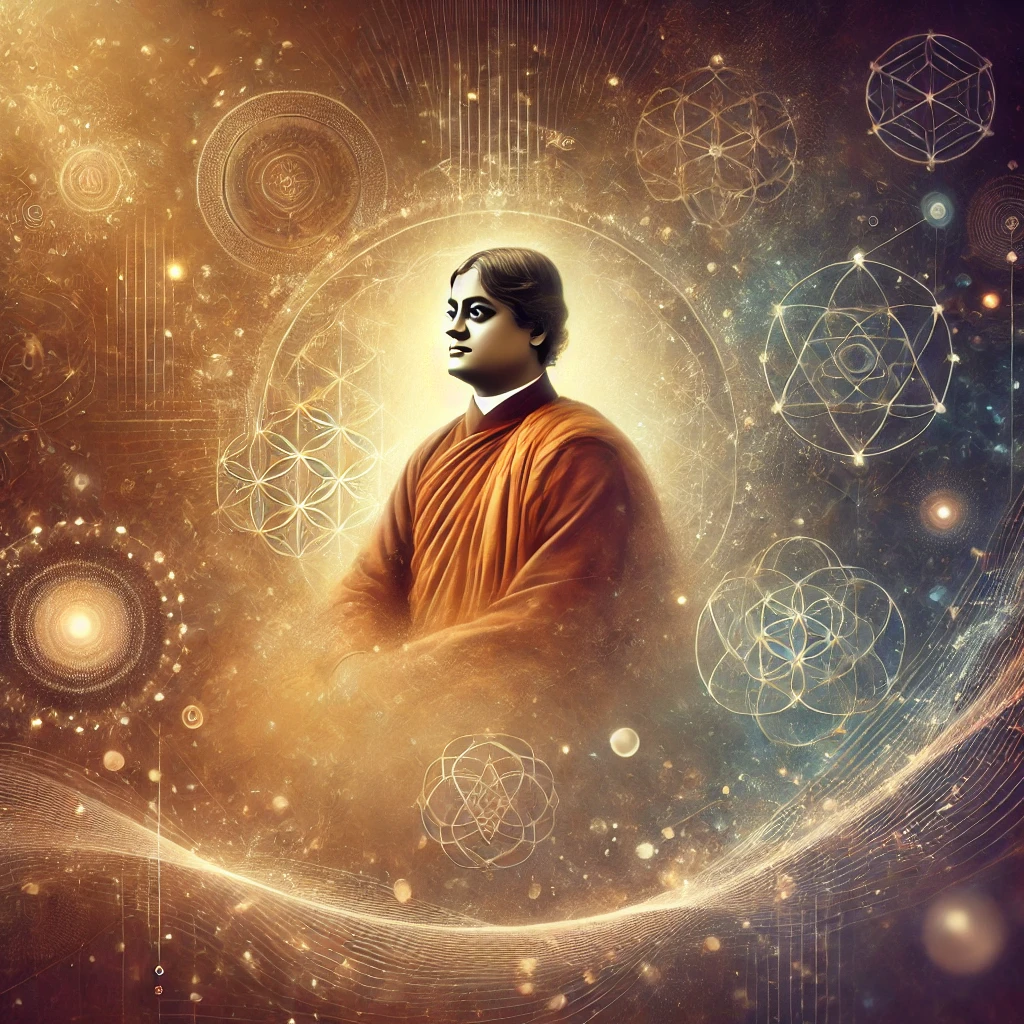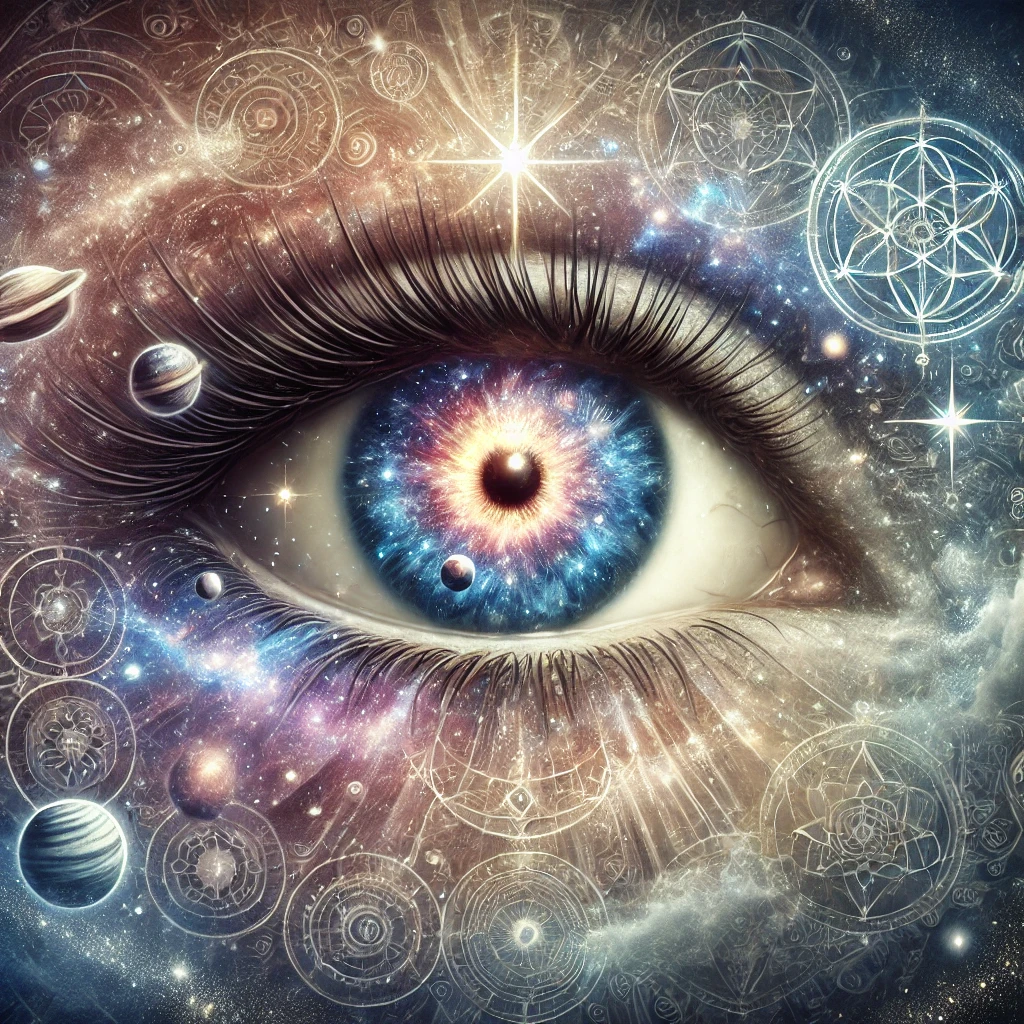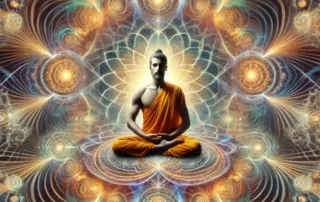- Kali’s Role as Cosmic Catalyst and Protector – Delving into Kali’s unique power to shape destiny, focusing on her direct influence on Ramakrishna’s journey and Vivekananda’s profound vision.
- Vivekananda’s Encounter with Ramakrishna and His Mystical Visions – Specifically analyzing Vivekananda’s experiences and the science of consciousness, touching on altered states and the neurological impact of meditative visions.
- The Unfolding Destiny: From Vivekananda’s Vision to Tesla’s Resonance – Kali’s orchestration in bringing Tesla and Vivekananda together, connecting Tantra’s non-dualism with Tesla’s energy principles. Finally, exploring why Vivekananda didn’t take the Tantric path despite his connection with Kali.
Part 1: Kali, the Cosmic Catalyst
Kali, the fierce manifestation of Shakti, is the universal catalyst, an energy field that shapes creation and destruction. For Ramakrishna, Kali was his guiding force. She was the embodiment of consciousness in motion, the fierce mother and cosmic protector whose energy fueled his Tantric sadhana. Ramakrishna’s deep love and reverence for her went beyond ritual—Kali was alive to him, a real presence.
From an energetic perspective, Kali represents the high-frequency vibrations that keep the cosmos in a state of creation and re-creation. She can be seen as a kind of electromagnetic energy, a force that weaves connections across lifetimes and dimensions. Her energy field is not bound by time, and so she guided Ramakrishna to nurture a soul who would continue her message—Vivekananda.
Ramakrishna, in a trance-like state, foretold Vivekananda’s mission, telling him, “Mother Kali has great plans for you.” His guru knew that Kali’s energy would protect Vivekananda and guide him to far-reaching, influential paths. Ramakrishna understood that Kali was not just setting Vivekananda on a path of personal transformation but on one of global awakening. As cosmic energy, she wove the threads of Vivekananda’s destiny, foreshadowing his meeting with Nikola Tesla—a future he could not foresee but which she was orchestrating.

Part 2: Vivekananda’s Visionary Experience with Ramakrishna and the Science of Mystical States
Vivekananda’s connection to Kali was indirect, coming through his spiritual experiences with Ramakrishna. Vivekananda initially resisted the concept of Kali, viewing her fierce image and energy with skepticism. However, under Ramakrishna’s influence, he began experiencing visions, altered states, and a kind of mystical consciousness induced through meditative depth. This phenomenon is often termed “the mystical state”, where brainwave frequencies shift, entering theta and delta waves associated with transcendence and expanded awareness.
In neuroscience, such experiences are linked to the activation of the prefrontal cortex and the release of neurotransmitters like serotonin and dopamine, which can create intense feelings of unity, peace, or cosmic insight. In these states, Vivekananda glimpsed non-duality, understanding Advaita not as an intellectual concept but as an experience of oneness with all existence. Through Ramakrishna’s influence, he encountered Kali’s energy as a powerful vibration, an undeniable force field.
Yet Vivekananda never fully embraced the Tantric path, though he recognized Kali’s guidance through Ramakrishna. He saw himself as a proponent of Advaita Vedanta, preferring the pure oneness of consciousness without the complex rituals of Tantra. Ramakrishna once said to him, “You are meant to carry the flame of Advaita.” Kali, as the ultimate consciousness, guided him to Tesla and others, without the necessity of him becoming a Tantric practitioner himself.





